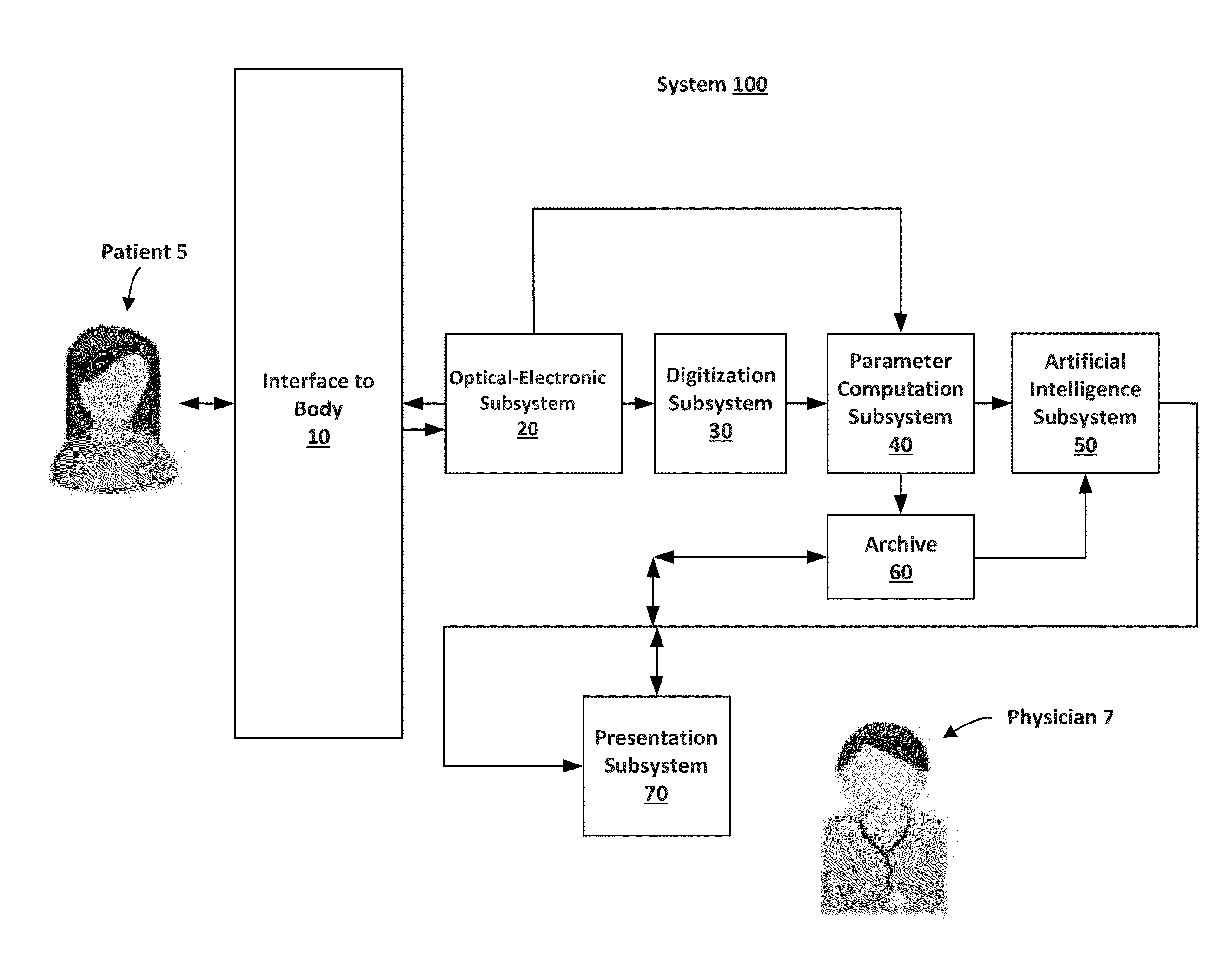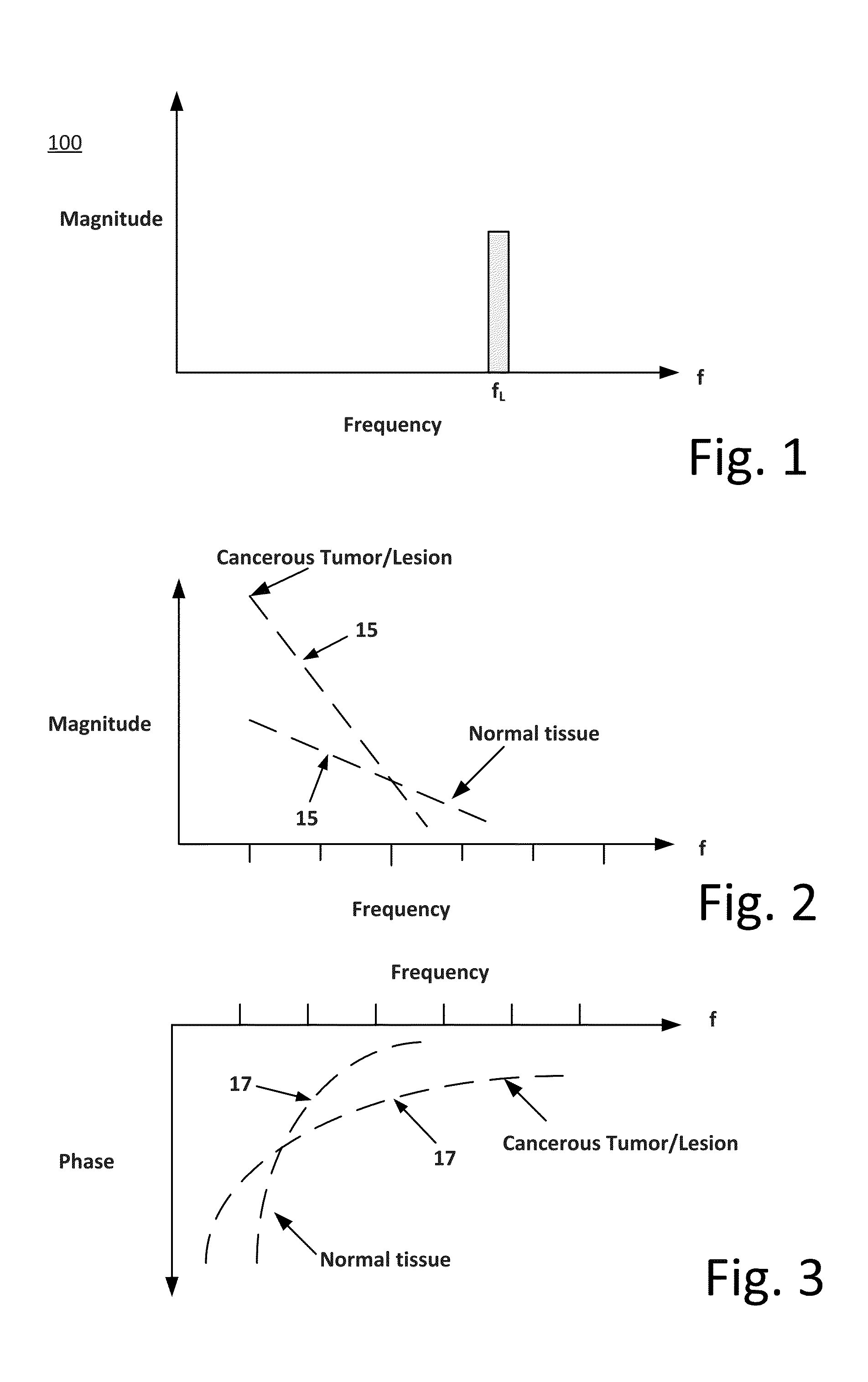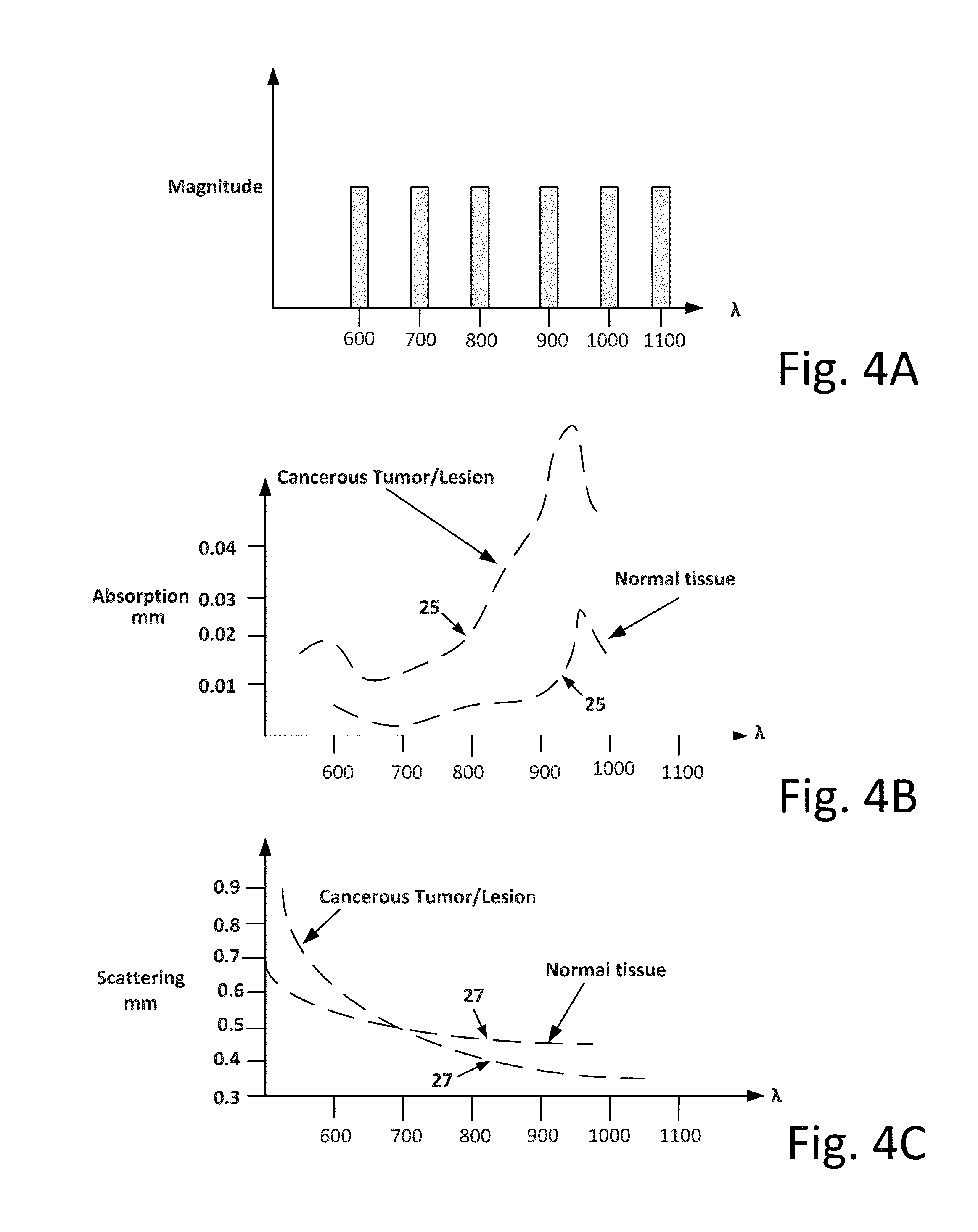Portable cancer diagnostic device and system
a cancer diagnostic and portable technology, applied in the field of portable cancer diagnostic devices and systems, to achieve the effect of convenient placement, shortening the initial cancer detection process, and convenient placemen
- Summary
- Abstract
- Description
- Claims
- Application Information
AI Technical Summary
Benefits of technology
Problems solved by technology
Method used
Image
Examples
Embodiment Construction
[0038]The present invention relates to a portable cancer diagnostic system and device that includes a plurality of subsystems, each of which can be implemented in hardware, software or a combination thereof.
System Overview
[0039]FIG. 5 is a block diagram of a system 100 for cancer diagnosis according to an example embodiment of the present invention. The system 100 may be implemented as a single, portable cancer diagnostic device. Alternatively, the system 100 may be implemented as a plurality of separate components that may be in wired or wireless communication with each other. The system 100 may include an Interface 10 to a patient 5, an Optical-Electronic Subsystem 20, a Digitization Subsystem 30, a Parameter Computation Subsystem 40, an Artificial Intelligence Subsystem50, an Archive 60 and a Presentation Subsystem 70. Each of these subsystems will be described separately. However, it will be understood that subsystems can be combined into a single hardware and / or software arrang...
PUM
 Login to View More
Login to View More Abstract
Description
Claims
Application Information
 Login to View More
Login to View More - R&D
- Intellectual Property
- Life Sciences
- Materials
- Tech Scout
- Unparalleled Data Quality
- Higher Quality Content
- 60% Fewer Hallucinations
Browse by: Latest US Patents, China's latest patents, Technical Efficacy Thesaurus, Application Domain, Technology Topic, Popular Technical Reports.
© 2025 PatSnap. All rights reserved.Legal|Privacy policy|Modern Slavery Act Transparency Statement|Sitemap|About US| Contact US: help@patsnap.com



